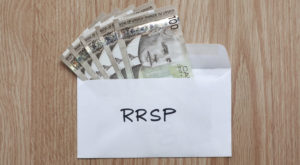By Elke Rubach
Special to the Financial Independence Hub
Tick-tock, tick-tock. The March 1 deadline for RRSP contributions that can be claimed against your 2021 income tax return is tomorrow. If you’re among the thousands of Canadians who haven’t put money into their RRSP this year, you still have time to take advantage of this government-sponsored, tax-deferred retirement savings plan.
Whether you’re a last-minute RRSP contributor or one who invests towards retirement regularly, it’s important to take a strategic and disciplined approach to how you fund and invest in your RRSP. Here are some pointers to consider in 2022 and beyond.
Thinking of borrowing? Think about your strategy
With interest rates still staying low by historical standards, it may seem like a good idea to borrow money to invest in an RRSP. It can be if you proceed with a well-considered strategy. As a starting point make sure you have a plan for repaying the loan as quickly as possible while committing to your investment for the long-term. It’s also important to choose investments most likely to yield a return that’s higher than the interest rate on your loan.
Consider tapping into your TFSA
Instead of borrowing, you may want to consider transferring some money from your TFSA into your RRSP. This allows you to get the tax deferral from your RRSP contribution without triggering tax on the money you’re taking out of your TFSA. At the same time, TFSA rules allow you to re-contribute the following year the amount you withdrew. Just as you would if you were borrowing, make sure you have a plan for repaying your TFSA.
Don’t miss out on employer matching
Take full advantage of company-sponsored programs that match RRSP contributions. In addition to the regular contributions deducted from your pay, ask your employer to direct any bonuses coming your way straight to your RRSP. At some companies, it’s standard practice to pay bonuses in February as a way to help employees maximize RRSP matching benefits. Accept the help and put that hard-earned bonus towards your retirement.
Mind the investments in your RRSP
When it comes to investments, don’t just set it and forget it. Keep an eye on the investments inside your RRSP and review your asset allocation regularly with your financial advisor to make sure it continues to align with your goals and risk profile.
Trust your gut feeling: if you’re losing sleep over your investments, you may want to switch to a lower-risk strategy. Or if it makes sense, talk to your advisor about bumping up your investment risk level. Either way, make sure you understand what you’re investing in, and why.
Mind your contribution limit
Before you invest, check your most up-to-date allowable contribution room to make sure you don’t end up getting hit with an overcontribution tax. Overcontributions can happen inadvertently, such as when you make automatic contributions through an employer or when you’re putting money into a spousal RRSP. (In the latter case, the maximum you can contribute is based on your own limit, not your spouse’s.) To confirm your limit, look at the bottom of the RRSP deduction limit statement on your most recent notice of assessment or log in online to the Canada Revenue Agency’s My Account portal.
Stay on track by keeping track
Schedule regular meetings with your financial advisor to review your RRSP and your overall financial plan. This is especially important if you’ve gone through a material life event, such as a marriage, birth of a child or death of a spouse. Don’t wait until February to have this meeting. Book it towards the end of the year or, at the latest, in January as part of your New Year’s resolutions.
 Elke Rubach, LLB, LLM, CFP, CLU, FEA, is Principal and Founder of Rubach Wealth, a leading wealth management firm she founded in 2012. Her mission is to provide tax-efficient financial planning to help clients build multi-generational legacies. Rubach Wealth is built on her vision that all clients, especially women, need to be financially independent. Elke earned undergraduate and graduate degrees in law, the latter in banking and finance on scholarship at the London School of Economics.
Elke Rubach, LLB, LLM, CFP, CLU, FEA, is Principal and Founder of Rubach Wealth, a leading wealth management firm she founded in 2012. Her mission is to provide tax-efficient financial planning to help clients build multi-generational legacies. Rubach Wealth is built on her vision that all clients, especially women, need to be financially independent. Elke earned undergraduate and graduate degrees in law, the latter in banking and finance on scholarship at the London School of Economics.


